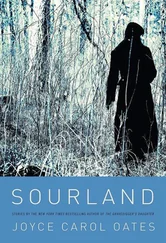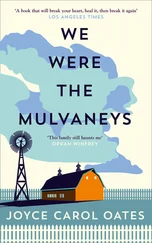In March 1971 there came by special delivery a packet for Hazel Jones that was not a gift, but a manila envelope with the return address GALLAGHER MEDIA INC. Inside the envelope were photocopies of newspaper articles and one of Thaddeus Gallagher’s hastily scrawled letters.
At last my assistant gathered these matrials, Hazel. Why it has takken so long I frankly DO NOT KNOW. Thought you would be intriguing, Hazel Jones. “Only a Conincidence” I know. [THANK GOD THANK GOD this poor Hazel Jones was not you.]
There were several pages more, but Hazel tossed them away without reading them.
In an upstairs room of the Delaware Park house where no one was likely to disturb her, Hazel removed the photocopied material from the manila envelope and spread it out on a table. Her movements were deliberate and unhurried and yet her hands shook slightly, she seemed to know beforehand that the revelation Thaddeus Gallagher had sent her would not be a happy one.
The newspaper articles had already been arranged in chronological order. Hazel tried to keep from glancing ahead to learn the outcome.
Yet, there it was:
GRISLY DISCOVERY IN NEW FALLS
FOLLOWS DOCTOR DEATH
Female Skeletons Unearthed
And,
DECEASED NEW FALLS M.D.
SUSPECT IN UNSOLVED 1950S ABDUCTIONS
Property Searched by Police, Skeletons Found
Both clippings included an accompanying photograph, the same likeness of a genially smiling man of middle age: Byron Hendricks, M. D.
“Him! The man in the panama hat.”
Both articles, from the Port Oriskany Journal , were dated September 1964. New Falls was a small, relatively affluent suburb north of Port Oriskany, on Lake Erie. Hazel told herself sternly It is over now . Whatever it was, is over now . It has nothing to do with me now .
It was so. It had to be so. She had not given a thought to Byron Hendricks, M.D., for eleven years. Virtually all memory of the man had faded from her consciousness.
Hazel turned to the first of the articles, also from the Journal , and dated June 1956.
NEW FALLS GIRL REPORTED MISSING
POLICE, VOLUNTEERS EXPAND SEARCH
Hazel Jones, 18, “Vanished”
This Hazel Jones had attended New Falls High School but had dropped out at the age of sixteen. She had lived with her family in the country outside New Falls and had supported herself by “babysitting, waitressing, housecleaning” locally. At the time of her disappearance, she had just begun summer work at a Dairy Queen. Numerous parties had seen Hazel Jones at the Dairy Queen on the day of her disappearance; at dusk she had left to ride her bicycle home, a distance of three miles; but she had never arrived home. Her bicycle was subsequently found in a drainage ditch beside a highway, about two miles from her home.
Apparently it was not a kidnapping, there was no ransom demanded. There were no witnesses to any abduction. No one could think of any person who might have wanted to harm Hazel Jones nor did Hazel Jones have a boyfriend who might have threatened her. For days, weeks, eventually years Hazel Jones was the object of a search but she, or the body she had become, was never found.
Hazel stared at the girl in the photograph. For here was a familiar face.
Aged seventeen at the time of the photograph, Hazel Jones had thick wavy dark hair that fell to her shoulders and across her forehead. Her eyebrows were rather heavy, she had a long nose rather broad at the tip. She was not pretty but “striking”-almost, you might say “exotic.” Her mouth was fleshy, sensuous. Yet there was something prim and even sullen about her. Her eyes were large, very dark, untrusting. For the camera she tried to smile, not very convincingly.
How like Rebecca Schwart at that age, this Hazel Jones! It was unnerving. It was painful to see.
Former New Falls classmates said of Hazel Jones that she was “quiet”-“kept to herself”-“hard to get to know.”
Hazel Jones’s parents said she would “never have gotten into any car with anybody she didn’t know, Hazel wasn’t that kind of girl.”
A subsequent article depicted Mr. and Mrs. Jones posed in front of their “modest bungalow-style” home on the outskirts of New Falls. They were a middle-aged couple, heavy-browed and dark-complected like their daughter, staring grimly at the camera like gamblers willing to take a risk though expecting to lose.
The fake-brick siding on the Joneses’ house was water stained. In the Joneses’ grassless front yard, debris had been raked into a mound.
The next several articles were dated 1957, from upstate newspapers in Port Oriskany, Buffalo, Rochester and Albany. (The Rochester and Albany papers belonged to the Gallagher chain, coincidentally.) In June 1957 another girl was reported missing, this time from Gowanda, a small city thirty miles south and east of Port Oriskany; in October, yet another girl was reported missing from Cableport, a village on the Erie Barge Canal near Albany, hundreds of miles east. The girl from Gowanda was Dorianne Klinski, aged twenty; the girl from Cableport was Gloria Loving, aged nineteen. Dorianne was married, Gloria engaged. Dorianne had “vanished into thin air” walking home from her salesclerk job in Gowanda. Gloria had similarly vanished walking home from Cableport on the Erie Canal towpath, a distance of no more than a mile.
How like Hazel Jones of New Falls these girls looked! Dark-haired, not-pretty.
In the several articles about Dorianne and Gloria there were no references to Hazel Jones of New Falls. But in articles about Gloria Loving, there were references to Dorianne Klinski. Only in later articles, about girls missing in 1959, 1962, and 1963, were there references to the “original” missing girl Hazel Jones. It had taken law enforcement officers, spread across numerous rural counties and townships through New York State, a long time to connect the abductions.
Hazel was reading with mounting difficulty. Her eyes flooded with tears of hurt, rage.
“The bastard! So that’s what he wanted with me: to murder me.”
It was a supreme joke. It was the most fantastical revelation of her life. “Hazel Jones”: all along, from the first, a dead girl. A murdered girl. A naive trusting girl who, when Byron Hendricks had approached Rebecca Schwart on the towpath outside Chautauqua Falls, had been dead for three years. Dead, decomposed! One of the female skeletons to be one day unearthed on Byron Hendricks’s property.
Hazel forced herself to continue reading. She must know the full story even if she would not wish to recall it. The final articles focused on Byron Hendricks, for now in September 1964 the man had been exposed. The most lavish article was a full-page feature from the Port Oriskany Journal in which “Dr. Hendricks’s” benignly smiling face was positioned in an oval surrounded by oval likenesses of his six “known” victims.
At least, Hendricks was dead. The bastard wasn’t locked away somewhere in a mental hospital. There was that satisfaction, at least.
Hendricks had been fifty-two at the time of his death. He had lived alone for years in a “spacious” brick home in New Falls. His medical degree was from the University of Buffalo Medical School but he had never practiced medicine, as his deceased father had done for nearly fifty years; he identified himself as a “medical researcher.” New Falls neighbors spoke of Hendricks as “friendly-seeming but kept to himself”-“always a kind word, cheerful”-“a gentleman”-“always well dressed.”
Hendricks’s only previous contact with any of his victims, so far as police could determine, had been with eighteen-year-old Hazel Jones who’d done “occasional housecleaning” for him.
Hendricks had been found dead in an upstairs room of his home, his body badly decomposed after ten or more days. Initially it was believed that he’d died of natural causes, but an autopsy had turned up evidence of a morphine overdose. Police discovered scrapbooks of news clippings pertaining to the missing girls as well as “incriminating memorabilia.” A search of the house and overgrown two-acre lot led to the eventual discovery of an “estimated” six female skeletons.
Читать дальше












